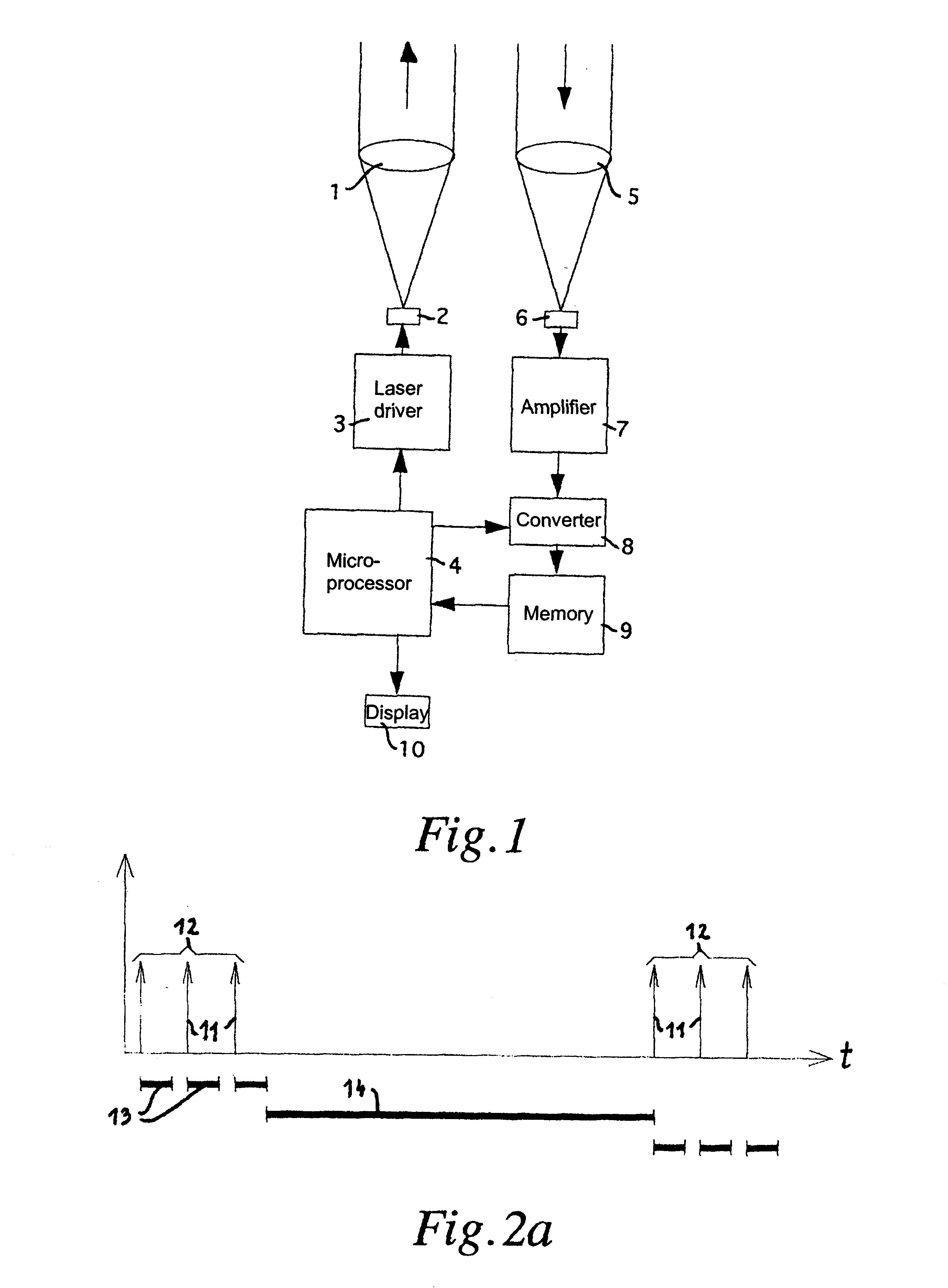Method for optically measuring distance
- Summary
- Abstract
- Description
- Claims
- Application Information
AI Technical Summary
Benefits of technology
Problems solved by technology
Method used
Image
Examples
example
FIG. 2a schematically shows the progress over time of the transmission of laser pulses over a time t.
16 laser pulses are transmitter per pulse train 12. Only the first three pulses are being shown. The transmission rate of the laser pulses 11 in a pulse train 12 was 100 kHz; hence, the spacing between the laser pulses 11 was 10 .mu.s.
Following each laser pulse 11 the received signal was scanned at 20 MHZ during a measuring time window 13. Each scanning value thus corresponded to 50 ns or 7.5 m. 128 scanning values in a scanning value set were stored, thus corresponding to a measuring time window 13 of 6.4 .mu.s (corresponding to a maximum distance of 960 m).
After 16 laser pulses 11 there was a pause of 1.44 ms duration, and thereafter the next pulse train 12 was transmitted. On chronological average, 16 light pulses were transmitted every 1.6 ms which corresponds to an acceptable value for conventional laser diodes of an average repetition rate of 10 kHz.
The time of the pauses betwe...
PUM
 Login to View More
Login to View More Abstract
Description
Claims
Application Information
 Login to View More
Login to View More - R&D
- Intellectual Property
- Life Sciences
- Materials
- Tech Scout
- Unparalleled Data Quality
- Higher Quality Content
- 60% Fewer Hallucinations
Browse by: Latest US Patents, China's latest patents, Technical Efficacy Thesaurus, Application Domain, Technology Topic, Popular Technical Reports.
© 2025 PatSnap. All rights reserved.Legal|Privacy policy|Modern Slavery Act Transparency Statement|Sitemap|About US| Contact US: help@patsnap.com



